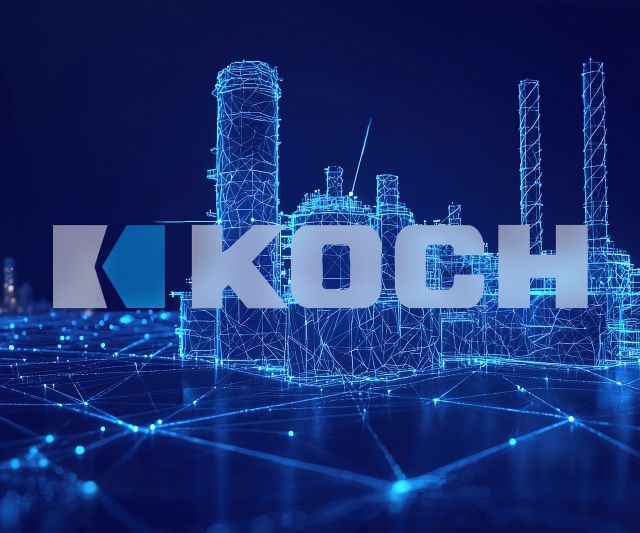Overview of Koch Industries
Koch Industries stands as a titan in American business, holding the position of the second-largest private company in the United States after Cargill. Founded in 1940 by Fred C. Koch, the company has grown from its roots as a small engineering firm into a global powerhouse that generates more than $115 billion in annual revenue. Koch’s operations span numerous sectors, from refining and chemicals to forest products, glass, automotive components, fertilizers, and consumer goods. With a workforce of over 120,000 employees across nearly every U.S. state and 60 countries, the company exerts significant influence on global markets.
Koch’s growth springs partly from its decentralized but philosophically unified approach. Major subsidiaries include Georgia-Pacific (paper and building materials), Molex (electronic components), Flint Hills Resources (refining and chemicals), and Guardian Industries (glass manufacturing). Although each unit operates with considerable autonomy, all share a guiding management philosophy oriented toward market-based innovation and long-term value creation. This approach has fostered remarkable growth—Koch’s value has increased more than 2,000-fold since 1960—while allowing the company to remain privately owned.
Innovation and Strategic Growth
Koch’s strategic vision includes a strong emphasis on research, development, and emerging technologies. Through targeted investments in areas such as artificial intelligence, robotics, and sustainable energy, the company continuously adapts to changing market conditions. Recent initiatives have supported renewable energy projects, advanced analytics, and company-wide digital transformation. Koch’s status as a family-owned enterprise, free from quarterly earnings pressures, enables it to prioritize long-term returns over near-term results. This dynamic combination of size, scope, and independence has helped Koch thrive for generations.
The Short Answer: Public Investment Status
For those eager to invest in Koch Industries directly, the answer remains straightforward: you can’t. Koch Industries is a privately held corporation that has never offered stock to the general public. Its continued commitment to family ownership traces back to Fred C. Koch’s original business model, preserving centralized control and avoiding any listing on major exchanges.
Private Ownership Structure
Koch’s private structure remains its defining characteristic, reflecting deliberate decisions by the Koch family to maintain full control. There are no public stock offerings, no NYSE or NASDAQ ticker symbols, and no outside shareholders. Financial reports follow private company standards, and decisions about investments and strategy fall entirely to the Koch family and a select group of private stakeholders.
Charles Koch and other family members hold the majority of ownership, upholding a multi-generational legacy. This tight concentration of control allows the Koch family to remain deeply involved in strategic decisions and operational direction. It also preserves the company’s culture and values, ensuring that Koch can plan for the long haul without the pressures of meeting quarterly earnings targets or public-shareholder expectations. While this model limits outside participation, it has proven exceptionally effective at fueling stable expansion.
Impact on Individual Investors
Many individual investors hope to gain direct exposure to Koch’s wide-ranging businesses but soon discover that private ownership blocks any chance of purchasing Koch stock on a public exchange. This inherent limitation is part of the company’s larger success story: by avoiding the demands of a public listing, Koch maintains flexibility to invest in long-term projects and ventures without external scrutiny. It can weather market downturns, make large-scale acquisitions at opportune times, and dedicate substantial resources to research and development.
Common Koch Industries Investment Questions
Investors frequently ask how they can “get a piece” of Koch’s success without the option to buy shares. While a direct stake in Koch is off the table, some individuals explore industry-focused ETFs or mutual funds, look to invest in Koch’s publicly traded competitors, or investigate private equity funds with industrial sector specialization. Each strategy offers different levels of alignment with Koch’s market segments—refining, chemicals, forest products, electronics, and more—yet none perfectly replicates the company’s broad, privately controlled model.
Alternative Ways to Gain Exposure
Although you cannot buy Koch Industries shares directly, there are still avenues to gain exposure to similar markets and industries:
- Invest in Competitors or Related Companies. Publicly traded rivals—such as DuPont for chemicals, International Paper for paper products, or Honeywell for industrial technology—offer investment opportunities in comparable sectors.
- Look at Industry-Specific ETFs or Mutual Funds. Exchange-traded funds (ETFs) and mutual funds specializing in energy, chemicals, or industrial materials can help approximate Koch’s market presence.
- Consider the Supply Chain. Railroad operators like CSX or Union Pacific that handle Koch’s shipments, or technology providers fueling Koch’s digital transformation, may offer indirect exposure.
- Investigate Private Equity Options. For qualified investors, certain private equity funds focus on family-owned manufacturing or industrial businesses akin to Koch.
None of these strategies precisely mirror Koch’s integrated approach and Market-Based Management® principles, but they do offer partial exposure to the industries in which Koch operates.
Understanding Koch’s Business Structure
Koch’s organizational design combines family control with decentralization. Founded in 1940 under Fred Koch, the company has grown through steady reinvestment and strategic acquisitions, such as Guardian Industries in glass manufacturing and Molex in electronic components. At the top, Charles Koch chairs the board and serves as CEO, providing a unified vision and stable leadership. Beneath this core leadership:
- Subsidiary Autonomy. Major business units—Georgia-Pacific, Flint Hills Resources, Guardian Industries, and Molex—have significant operational independence, each with its own management team and culture. This structure promotes agile decision-making in local markets.
- Integration and Collaboration. Koch encourages coordination across its various subsidiaries, leveraging shared services, combined purchasing power, and joint research initiatives. The consistent application of the Market-Based Management® framework connects these separate divisions.
- Financial Independence. Remaining private enables Koch to reinvest profits internally, deploy capital as it sees fit, and shield long-term projects from short-term market turbulence.
This blend of centralized leadership and decentralized operations allows Koch to move quickly, adapt to market changes, and develop a culture of bottom-up innovation without sacrificing its broader strategic focus.
Benefits and Drawbacks of Private Ownership
Koch’s growth and stability largely stem from its decision to remain private—a choice that confers both clear advantages and notable trade-offs.
Advantages
Without quarterly earnings pressure, Koch has the freedom to make long-term bets on technology, pivot quickly within its industries, and preserve its distinct corporate culture. Family ownership also fosters consistent leadership and a unified mission, which has created a resilient organization that can navigate economic upheavals while continuously reinvesting in research, development, and acquisitions.
Drawbacks
Limited access to public equity markets can constrain the capital Koch can raise. Debt financing, while still available, might be more expensive, and there is no public stock to use as acquisition currency. Another challenge involves succession planning: maintaining family ownership through multiple generations requires careful attention to leadership transitions and evolving governance structures.
Overall, this private model suits Koch’s ethos of long-term value creation and strategic independence. The company’s steady expansion under private ownership exemplifies how a deliberate strategy can provide both financial success and organizational stability.
Future Investment Possibilities
Koch Industries has signaled no intention to go public. Its strong internal cash flows—exceeding $115 billion in annual revenue—support ongoing expansion, and the family’s legacy-driven approach stands firmly against issuing shares on the public market. Though an initial public offering (IPO) remains unlikely, some industry observers speculate that Koch may eventually consider spinning off or partially listing individual subsidiaries, such as Georgia-Pacific or Molex, to unlock additional capital for growth. As of now, however, the company appears committed to its private status and continues to acquire or invest in other businesses on its own terms.
Potential Market Developments
- Subsidiary Spin-offs or Minority Stakes. Koch might decide to sell a minority interest in certain subsidiaries or form joint ventures with other private or public companies.
- Private Equity Partnerships. As technology investment accelerates, Koch could partner with private equity or venture capital funds to pursue cutting-edge opportunities.
- Family Succession and Governance Shifts. Future generations may or may not want to maintain total family control, although no major changes are currently on the horizon.
Conclusion
Koch Industries’ commitment to private ownership has shaped its growth from a small engineering firm into a globally recognized conglomerate. Despite generating more than $115 billion in annual revenue, the company remains firmly in family hands, emphasizing a market-based, long-term approach rather than public shareholder returns. While it’s impossible to buy Koch stock on the open market, investors can still gain indirect exposure through ETFs, competitor stocks, or supply-chain partners that operate in the same industries.
For many observers, Koch’s success highlights the advantages of private control: strategic freedom, cultural consistency, and the ability to pursue long-term value creation without the constraints of quarterly reporting. By understanding Koch’s privately held status and exploring complementary investment options, individuals can shape their portfolios to reflect similar industrial and consumer-product market themes. Koch’s ongoing growth and diversification prove that a company can reach vast scale and global significance—even without ever issuing a single publicly traded share.




















